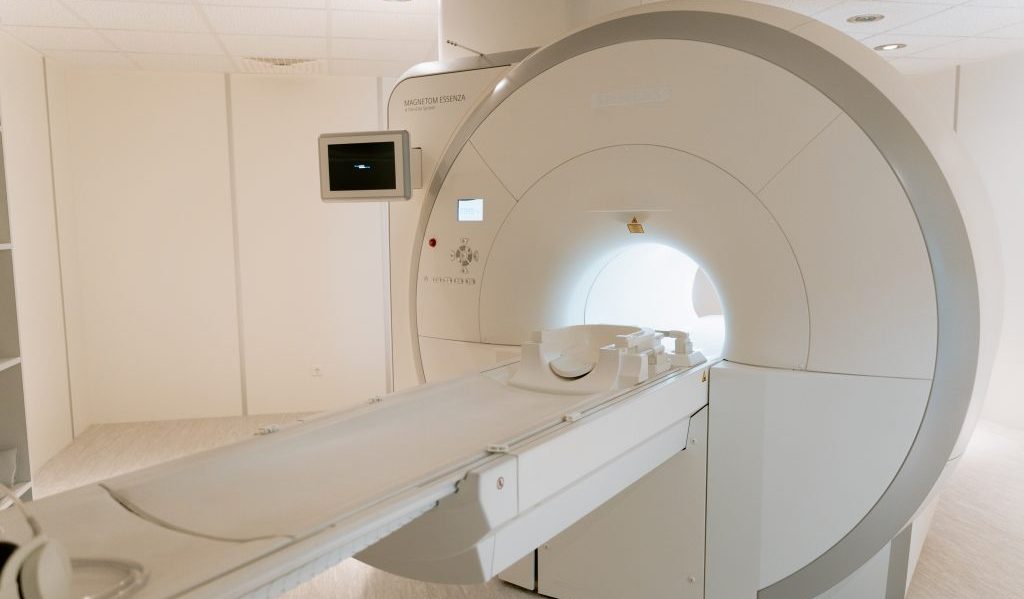Lung nodules are round or irregular shadows (opacity) measuring no more than 30 mm in size. Masses are shadows that are larger than 30 mm. Lung nodules or masses are usually found on a chest X-ray or CT scan and can be one or more.
The diagnosis of a lung nodule or mass is often challenging. A very large number of lung conditions can cause them. These include a wide variety of benign (non-cancerous) lesions such as infections, benign tumours or sometimes malignant (cancerous) lesions.
Most nodules detected on X-ray are over 10 mm, and small nodules are not usually easy to see. CT scan is the preferred method of lung screening. Many people who get CT exams have nodules, especially tiny nodules a few millimetres in size. These tiny nodules are very rarely cancerous.
The evaluation of lung nodules usually begins with an assessment of their imaging features to detect the presence of features typical of benign or malignant nodules. The imaging features are then combined with the patient’s clinical condition. These may include symptoms such as fever, cough or sputum, as well as age, smoking history, family history, working & life circumstances, etc.
Imaging features of lung nodules
The assessment of imaging features is obviously critical in the evaluation of lung nodules. It helps to differentiate between benign and malignant nodules, although its outcome is not yet confirmed. It often needs to be analysed in conjunction with clinical features.
Diagnostic imaging is mainly based on the size of the nodule, the growth rate, marginal features, internal features (e.g. fat, calcifications).
The likelihood of malignancy increases if a nodule is large in size, increased in volume, lobulated, burred, uneven in dense, non-calcified, with pleural indentation and vascular convergence signs.
Size
The size of a lung nodule has a very important impact on the assessment of whether it’s benign or malignant. Malignant nodules have a higher growth rate and are usually larger. Usually the larger the size, the greater the risk. Tiny nodules smaller than 5 mm are generally not at risk. Lung masses of 30 mm or more in size have a higher likelihood of malignancy compared to nodules.
Growth rate
Growth is a typical feature of malignant tumours. After a period of time, if a nodule becomes larger, it is likely to be malignant.
The rate of growth of a nodule is usually assessed by its volume. This is more reliable than using diameter alone.
Volume doubling time, or VDT for short, is a common parameter used to assess the growth rate. Studies have shown that nodules are almost exclusively benign when the doubling time is extremely long (1-2 years or longer) or extremely short. If the growth rate is somewhere in between, the nodules tend to be malignant.
Nodules often need to be monitored for 2 years or more. The length of monitoring depends on the nature of the nodule and other factors, such as the age of the patient.
Edge characteristics
- Lobulated or spiculated
Malignant nodules often show irregular, lobulated and spiculated margins. The opposite is true for benign nodules. This is due to an uneven growth rate in different directions in the interstitium of the lung. This is often associated with malignancy. However, a small part of benign nodules also present with lobulation and burr. On the other hand, there are some malignant nodules that do not have obvious lobulation and burr.
- Pleural retraction
Pleural retraction refers to a retraction of the pleura towards the lung nodule. This is formed by the pulling of the interstitial fibrous component of the lesion and the accumulation of physiological fluid in the pleural indentation due to negative pressure. This sign is often suggestive of cancer, especially for large nodules and masses.
- Vessel convergence
Vessel convergence is defined as the convergence of one or more blood vessels to a nodule. It is often a sign of malignancy, although some benign nodules may also show the sign. It is mainly seen in adenocarcinoma of the lung.
Internal characteristics
- Calcification
Calcifications in a nodule often indicate benignity. There are four types of calcification associated with benign lesions: central, diffuse solid, laminated or popcorn-like.
Nevertheless, calcification can still be found in a small percentage of malignant nodules.
- Fat
The presence of a fat component in a nodule often indicates a hamartoma, which is benign. Yet, a small number of malignant tumours can still contain a fat component.
- Cavitation
A cavitation is a air-containing, light-transmitting area within a nodule or mass. This sign can be seen in both non-cancerous and cancerous nodules, it is therefore important to combine it with other signs as well as clinical features.
- Air bronchogram
This sign refers to the presence of air-filled bronchi on the image. It can be present in both benign and malignant nodules.
